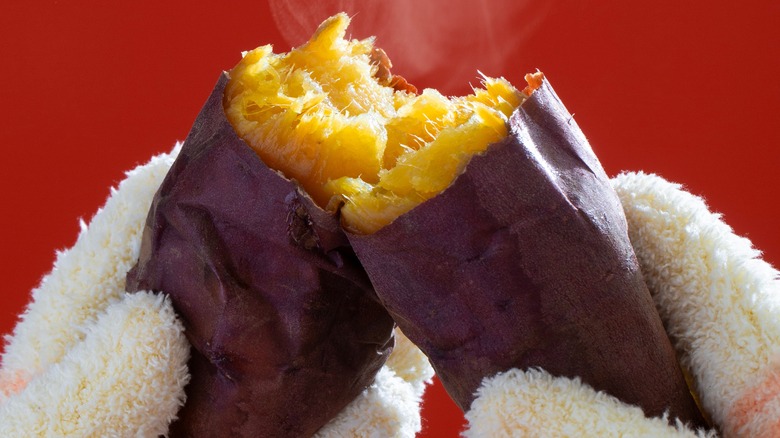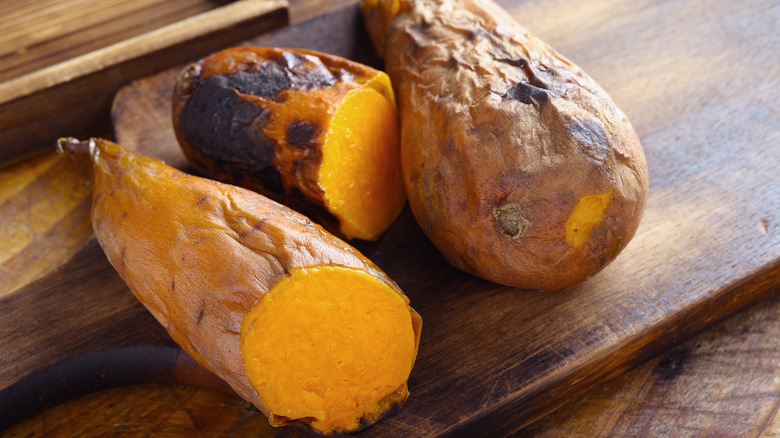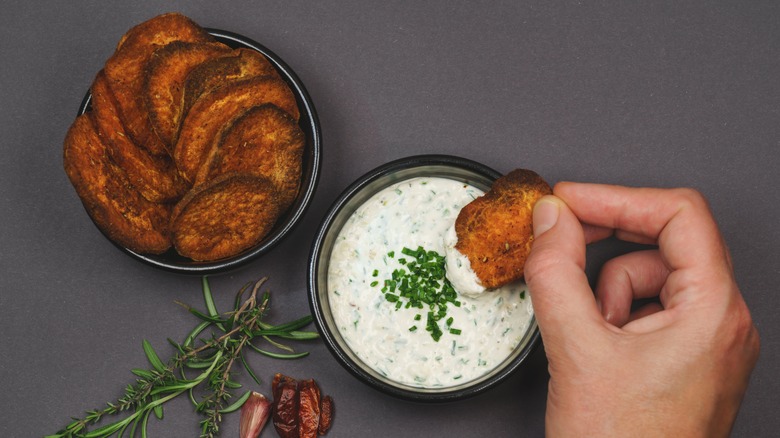The Best Sweet Potatoes You'll Ever Eat Are Hand Torn
Sweet potatoes don't receive the attention they deserve. Unlike roasting white potatoes, which are considered done when tender, sweet potatoes are more finicky, and often fall short of achieving the contrasting texture we seek — creamy on the inside, and crispy on the edges. Their high water content can result in soggy potatoes with diluted flavor if not cooked just right.
Without delving too deeply into food science, sweet potatoes must reach a specific temperature to allow water to evaporate, and their high sugar content to develop. This process enables the Maillard reaction, producing that sought-after golden crust without the need for deep frying. However, cranking up the heat can lead to burning or drying them out, so a two-stage roasting process is necessary to create the best sweet potatoes you'll ever taste.
Begin by roasting whole sweet potatoes until fork-tender, which could take over an hour, depending on their size. Let them cool while you preheat the oven to 475 degrees Fahrenheit for the second stage. Tear the potatoes into rough, craggy pieces — the greater the surface area, the more caramelization. So, avoid being too gentle or using a knife. Arrange them in a single layer on a parchment-lined sheet pan, drizzle with olive oil, and sprinkle your favorite spice blend. Roast them again until the edges are crispy. They make a delicious side dish, or can be dressed up with a sauce for a family-style appetizer.
Tips for preparing torn sweet potatoes
Like white spuds, sweet potatoes come in many varieties with different water and starch levels, so they cook differently. In the U.S., purchasing sweet potatoes can be confusing, since they are often labeled as yams. For the best results, you'll want garnet or ruby yams for this recipe.
To expedite the first stage of cooking, you can par-cook the sweet potatoes in the microwave until tender. Be sure to poke holes throughout the potatoes first so they don't explode, and place them on a microwave-safe plate since they will ooze sugary syrup as they cook. If you have a digital thermometer, aim for the internal temperature to reach 200 degrees Fahrenheit during this first stage. This can also be achieved with a sous vide device, but it will take longer.
If you're in a rush, you can skip the oven and bake the sweet potatoes in an air fryer. Since the countertop appliance is much smaller, this method is only practical if you are cooking one potato; otherwise, it will have to be done in batches. Toss the torn pieces with oil and seasoning, and air fry them for a few minutes until the edges are crispy.
Serving torn sweet potatoes
These twice-roasted, torn sweet potatoes can be enhanced in many ways. Their crispy texture makes them perfect for finger food, especially when paired with a creamy dip. Pair the roasted potatoes with homemade aioli, or spruce up your favorite store-bought mayonnaise with sriracha for a kick, or Spanish paprika for a smoky flavor. Hummus, ranch dressing, or tahini sauce are additional options.
For a more refined presentation that requires a fork, brighten the dish with a garnish of fresh Italian parsley, or go a step further and make a chimichurri sauce to spoon over the top. When prepared like Giada De Laurentiis' crispy potatoes, the tuber's sweetness is nicely balanced with a salty topping. The chef coats the torn potatoes with melted butter, finely grated parmesan cheese, fresh lemon zest, and black pepper before they go in the oven for the final time, giving the edges another reason to char. To accentuate their sweetness, drizzle the potatoes with a mixture of honey (or maple syrup), melted butter, and salt before the second roasting, and again before serving. Add sliced jalapeños or Fresno chilies for heat.



